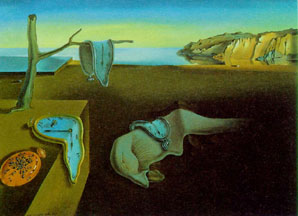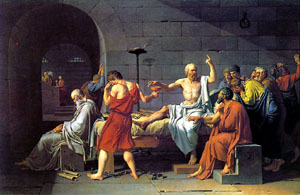Not Intended to Be Art
Ancient Egyptian art was produced in the lower Nile Valley around 3000 BC to 100 AD and consisted of painting, sculpture, and architecture . The static, formal, strangely abstract, and often blocky nature of much Egyptian imagery has, led to comparisons with later, and much more ‘naturalistic,’ Greek or Renaissance art. However, the art of the Egyptians served a vastly different purpose than that of these later cultures.
While today we are taken-aback at the wonderous treasures from the tomb of Tutankhamun, the sublime registers in New Kingdom tombs, and the serene beauty of Old Kingdom statuary, but the strangest notion to remember that the majority of these works were never intended to be seen. Most of the surviving art comes from tombs and monuments that heavily emphasis on life after death, and the preservation of knowledge of the past.
Behind the Art
Ancient Egyptian art forms are characterized by regularity and detailed depiction of gods, human beings, heroic battles, and nature, and a high proportion of surviving works were intended to provide solace and utility to the deceased in the afterlife. Artists endeavored to preserve everything from the present as clearly and permanently as possible. Ancient Egyptian art was created using media ranging from papyrus drawings to pictographs (hieroglyphics) and include funerary sculpture carved in relief and in the round from sandstone, quartz diorite and granite. Ancient Egyptian art displays an extraordinarily vivid representation of the Ancient Egyptian’s socioeconomic status and belief systems. Egyptian art in all forms obeyed one law: the mode of representing Pharaohs, gods, man, nature and the environment remained consistent for thousands of years.
Embracing the Two-Dimensional World
Paintings of Two-dimensional individuals is what comes to mind when I think of Egyptian art and what Egyptian artists are known for. They embraced the two-dimensional surface and attempted to provide the most representative aspects of each element in the scenes rather than attempting to create vistas that replicated the real world.
Each object or element in a scene was rendered from its most recognizable angle and these were then grouped together to create the whole. This is why images of people show their face, waist, and limbs in profile, but eye and shoulders frontally. These scenes are complex composite images that provide complete information about the various elements, rather than ones designed from a single viewpoint, which would not be as comprehensive in the data they conveyed
In the Temple of Ramses II at Abydos (New Kingdom). Artist unknown, photo taken by Dr. Amy Calvert.
The Creation of Registers
No not where a cashier checks you out, but by definition a register where sciences ordered in parallel lines. These registers separate the scene as well as provide ground lines for the figures. Scenes without registers are unusual and were generally only used to specifically evoke chaos; battle and hunting scenes will often show the prey or foreign armies without groundlines. Registers were also used to convey information about the scenes—the higher up in the scene, the higher the status; overlapping figures imply that the ones underneath are further away, as are those elements that are higher within the register.
On a painted box from the tomb of Tutankhamen in the Egyptain Museum, Cairo. Artist unknown.
Sculpture
The sculpting style of the Egyptians was much like the relief style of their paintings, meaning most of sculptures the feet, legs and head of each human figure are shown in profile but the torso, shoulders, arms and eyes are depicted as if from the front. The representation can be seen in the earliest sculptures on a slate slab of the Pharaoh Narmer commissions in 3100 BC.
Architecture
As many individuals around the world know that Egyptians were famous for their architecture, specifically “The Great Egyptian Pyramids.” Ancient Egyptian architects used sun-dried and kiln-baked bricks, fine sandstone, limestone and granite. Architects carefully planned all their work. The stones had to fit precisely together, since there was no mud or mortar. When creating the pyramids, ramps were used to allow workmen to move up as the height of the construction grew. When the top of the structure was completed, the artists decorated from the top down, removing ramp sand as they went down. Exterior walls of structures like the pyramids contained only a few small openings. Hieroglyphic and pictorial carvings in brilliant colors were abundantly used to decorate Egyptian structures, including many motifs, like the scarab, sacred beetle, the solar disk, and the vulture. They described the changes the Pharaoh would go through to become a god!
My absolute favorite sculpture is the most colossal sculpture of the ancient world is the Egyptian Sphinx. The great lion with a human face is carved, like most of the statues, from limestone. This sphinx is supossedly guarding the pyramids at Giza. Its face is believed to beat the features of Khafre, son of Khufu.
My Reason of Choice
Personally I’m amazed at the art in this time, especially with having little resource in material. Although, slaving many thousands of innocent people to do the work doesn’t quite sit well with me, the outcome it astounding! It was truly amazing the artwork that the Egyptians accomplished specifically the Great Pyramids and the Egyptian sphinx! I love most of the works because even though most of the artifacts found were for the Pharaohs and their families in the afterlife, many reflected history which is one of the amazing qualities of art!
References
“Art of Ancient Egypt.” Wikipedia. Wikimedia Foundation, 12 Apr. 2014. Web. 04 Dec. 2014.
“Egyptian Art.” – Smarthistory. N.p., n.d. Web. 03 Dec. 2014.
“Egyptian Pyramids.” History.com. A&E Television Networks, n.d. Web. 03 Dec. 2014.
“HISTORY OF SCULPTURE.” HISTORY OF SCULPTURE. N.p., n.d. Web. 05 Dec. 2014.





























